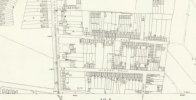flossiefoster
master brummie
My great grandfather, John Gossage (born 1862) married Eliza Burton and lived at No 4 Albert Road, Kings Heath which was a provisions shop with an off licence. There is a large piece of open ground on Alcester Road South between the corner of Albert Road and Howard Road. It has been open grassland for a long time and is now fenced off to make a children's play area. When my great grandfather lived at No 4, he kept a cow on that piece of grass. Does anyone know anything about that piece of land? Just across the Alcester Road there is the same width of grass all the way down past the houses and school all the way to what I think is Highfield Road except for the house on the corner of Highfield Road which is now in the way. Does anyone have any idea what the piece of land was on the corner of Albert Road. Would it have been "common land"? Obviously, if he kept a cow there it must have been fenced off but was it owned privately or by the City? Any ideas?

